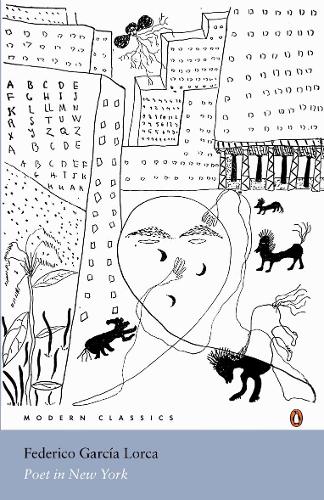
Poet in New York
(Paperback)
Publishing Details
Poet in New York
By (Author) Federico Garca Lorca
Edited by Christopher Maurer
Introduction by Christopher Maurer
Translated by Greg Simon
Translated by Steven F White
Penguin Books Ltd
Penguin Classics
27th March 2002
31st January 2002
United Kingdom
Classifications
General
Non Fiction
861.62
Physical Properties
Paperback
304
Width 133mm, Height 198mm, Spine 16mm
224g
Description
Spain's greatest and most well-loved modern poet, Lorca has long been admired for the emotional intensity and dark brilliance of his work, which drew on music, drama, mythology and the songs of his Andalucian childhood. This bilingual edition provides versions by distinguished poets and translators, drawing on every book of poems published by Lorca and on his uncollected works.
Reviews
"Lorca's long out-of-print poetic sequence about New York City, newly translated in this bilingual edition, is as contemporary as today's headlines: slums, racism, violence, and cries of loneliness punctuate this verse. Written during the Spanish playwright's nine-month stopover in 1929-30, and steeped in surrealistic technique, [this] unrelentingly negative antihymn reads the urban condition as symbolic of our culture's materialistic corruption of love and its degradation of nature . . . This [edition] is accompanied by Lorca's letters and a lecture he delivered on this lyrical work.""Publishers Weekly "
"[This] is one of the perplexing classics of 20th-century poetry. It is a difficult, sometimes bewildered, often hermetic work. It is elusive and enigmatic, mysterious, tortureda book, to borrow one of the poet's own phrases, 'that can baptize in dark water all who look at it.' Reading it in [this] convincing new translation . . . one feels the anguished authority an
Author Bio
Federico Garca Lorca was born into an educated family of small landowners in Fuente Vaqueros in 1898. A poet, dramatist, musician and artist, he attended the university at Granada, where he acquired a fine knowledge of literature. In 1919 he went to the Residencia de Estudiantes in Madrid and during his long stay there he met all the principal writers, critics and scholars who visited the place, which was then a flourishing centre of cultural liberalism. In 1928 his Gipsy-Ballad Book (Romancero gitano) received much public acclaim. In 1929 he went to New York with Fernando de los Ros and his volume of poems Poet in New York (Poeta en Nueva York) was published posthumously in 1940.
On his return to republican Spain, he devoted himself to the theatre, as co-director of La Barraca, a government-sponsored student theatrical company that toured the country. He now wrote fewer poems, but these include his masterpiece Lament for Ignacio Snchez Mejas (Llanto por la muerte de Ignacio Snchez Mejas, 1935), a lament for a dead bullfighter. He wrote classical plays, pantomimic interludes, puppet plays, La zapatera prodigiosa (1930) and three tragedies: Blood Wedding (Bodas de sangre, 1933), Yerma (1934) and The House of Bernarda Alba (La casa de Bernarda Alba, 1936). Just after the outbreak of the Spanish Civil War in 1936 he was murdered at Granada by Nationalist partisans, in mysterious circumstances.
